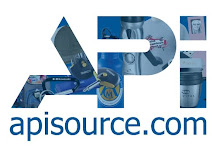Build your promotional muscle with water bottles, tote bags and fitness apparel.
Colleen McKenna
Selling into the fitness market is similar to working out. At first it is difficult; the machines are unfamiliar and the people seem to be speaking another language (reps, squats, etc.). However if you stick with it, then you start to see results. The hours spent stretching, running, sweating start to pay off and you notice an improvement in yourself. Selling into the fitness market may be exactly what you need to get you back to the gym. You'll see that with the proper hydration, supplies and apparel, you'll be expanding your fitness regime and your wallet.
Staying Hydrated
Selling to fitness institutions requires knowledge of the basics of exercise, hydration being a large part of that. Dena Rothstein, marketing director for Jetline, Gaffney, S.C. mentioned water bottles and sports bottles as great fitness products because of their function and wide appeal. No matter the exercise activity, end-users need to stay hydrated so sports bottles are the natural promotional choice.
Grethe Adams, president, Southern Plus, Hartwell, Ga. noted that companies in the fitness arena use high-visibility products like bags and totes in addition to exercise products. "Rather than just the classic gym bag, we've seen a trend by fitness clubs and gyms toward using items not specifically for use at the gym, like shopper totes and beach cooler bags," she said. "These items help build the brand outside of the facility and reach a wider demographic."
Steffenie Zorner, brand manager for Los Angeles-based Bella, seconded Adams's remark about using everyday products and explained how it extended to apparel. "Wearing fashionable fitness apparel for daily activities has become trendy, and it is a trend all age groups are participating in," she said. "Whether they are receiving these as giveaways or purchasing them from a group they are oriented with, everyone is looking for fashionable, functional pieces to wear to the gym and while running errands," she explained. Using trendy products allows for interest from end-users who might not normally be fitness-friendly, but care about current fashion trends and healthy living.
Healthy living is a motto among fitness markets that extends beyond fitness equipment. Most companies in the fitness and health market support wellness-conscious lifestyles, so eco-friendly products are also popular. "Another trend is the use of eco-friendly products," said Adams. "I think the concept of 'healthy living' now includes what's healthy for the environment." Zorner reiterated the easy-sell of environmentally conscious products. "Alo's bamboo styles are the ultimate material for gym apparel. They are super-soft and luxurious but naturally moisture-wicking," she said.
Finding Your Aura
The trick to selling exercise products is using colors and styles that appeal to the niche you are working in, whether it is yoga, kickboxing or any other sport you find. For yoga, Rothstein has found that blue- and green-based colors sell well. "With our yoga mats in particular we sell in four colors, and while blue outsells the other colors, we definitely have nice movement on the purple, teal and lime too," she said. Zorner mentioned basics like black and gray are always popular for all niches, but added bold colors and prints gives your promotion something extra. Adams echoed Zorner's observation. "We have also seen an increase in more fashion-forward colors/patterns like our Python print," she said.
Once you have settled on colors for your fitness campaign, make sure to pick products that are as durable as the exercises end-users will be performing in or with them. "Gym apparel needs to be more fitted, but still flattering, breathable and flexible," said Zorner. "The fabrics need to be able to withstand wear and tear, but they need to maintain the same look and feel as more luxurious fabrics."
Challenging Yourself
Gyms, health clubs and yoga studios are obvious sells for fitness products, but they are not the only ones. "As companies focus on promoting a healthy lifestyle as part of the corporate culture, they are also increasingly popular in company stores and incentive programs," said Adams. Fitness has become more than a personal initiative. It is a country-wide interest in fighting obesity and increasing education about and practice of healthy living. Products that promote exercise and nutrition help solidify the company giving them out as health-conscious. "Fitness products are used for launching healthy brands," Adams explained. She listed nonprofits, personal care companies, lifestyle brands and food companies as good healthy living brands. Zorner and Rothstein added schools, athletic groups, dance teams and college groups like fraternities and sororities as solid markets for fitness products.
Springing Back
When it comes to selling fitness products, distributors need to be wary of timing. "The push for selling fitness products is at the beginning of the year and early spring," said Adams. "This is the peak for new membership at fitness clubs but also the key season for new product launches related to health and fitness, including food and drink brands," she explained. Rothstein agreed though she also mentioned that the products sell year-round.
In addition to paying attention to seasons, distributors should consider the age of intended end-users because different age groups prefer different kinds of exercise. "Consider the end-user whenever possible," said Rothstein. "Adults are not the ideal market for jump ropes, but kids adore them; kids don't really go for pedometers, but adults love them. If you don't know your demographic or if it's all ages, go for something with wide appeal and function—water bottles are always safe," she explained.
Regardless of the age of end-users, remember that you are promoting a healthy lifestyle, not just exercise. "Promoting a healthy lifestyle is much more than just going to the gym. Any promotional product that relates to outdoor activities or is eco-friendly will tie in well with a healthy lifestyle message," said Adams.






No comments:
Post a Comment